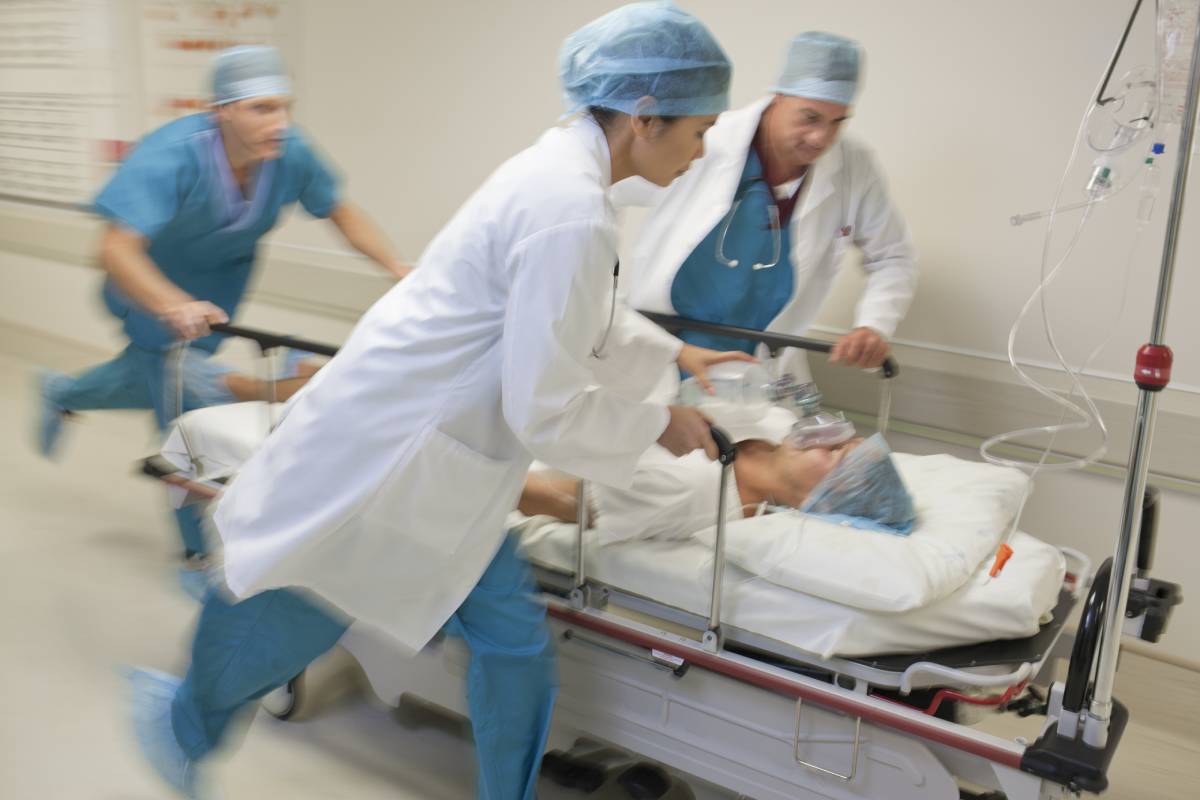Malignant Hyperthermia: Current Treatments

Malignant hyperthermia (MH) is an uncommon but life-threatening pharmacogenetic disorder that can occur in response to general anesthesia. MH is triggered by certain volatile anesthetics, either alone or co-administered with the depolarizing muscle relaxant succinylcholine. Uncontrolled release of calcium ions in muscle cells leads to extensive muscle fiber contraction, resulting in excessive heat and metabolic acidosis. MH thus results in the classic signs of hyperthermia, reactive muscle rigidity, high fever, and fast heart rate, alongside muscle breakdown and high blood potassium levels (1), which, left untreated, are likely to be fatal. Globally, its incidence during general anesthesia ranges from 1:5,000 to 1:100,000, representing a significant burden on healthcare systems (4).
Effective malignant hyperthermia management is built upon the pre-emptive assessment of individual susceptibility and preventive care. To this end, the “gold standard” for the diagnosis of MH currently consists of an in vitro muscle contracture test (5,6), though DNA analyses of MH-associated loci now also offer a minimally invasive alternative to screen for any disease-predisposing variants (2). The incidence of genetic predispositions is estimated at 1 in 3,000 people (3). Thereafter, once a patient is placed under anesthesia, careful monitoring is paramount to swiftly identify any emerging signs of MH. To this end, core temperature should be assessed in all patients undergoing general anesthesia for periods exceeding 60+ mins (7).
Research suggests that a case of MH is most effectively treated via a sequence of targeted interventions: 1) immediately discontinuing the triggering agent – volatile anesthetic and/or succinylcholine, 2) hyperventilation with 100% oxygen at maximum fresh gas flow to stabilize patient hemodynamics, and 3) administration of the muscle relaxant dantrolene (2-2.5 mg/kg) pro re nata – until the patient is clinically stable. Activated charcoal may also be inserted at this point into the breathing circuit to absorb and minimize the concentration of lingering anesthetic (8). As soon as it is safe to do so, surgery should be terminated (9).
If dantrolene is not available or if the patient’s hyperthermia is severe enough to warrant additional measures, the patient should be cooled with the goal of reaching a core temperature of no more than 38.5°C. Such methods include the administration of cold (4oC) intravenous saline, skin cooling via cold packs, peritoneal exchange, forced ambient air cooling, circulating cool water blankets, and ice water immersion. In the most extreme circumstances, a cardio-pulmonary bypass or extracorporeal membrane oxygenation may also be implemented as appropriate (11).
Furthermore, certain physiological perturbances can receive targeted treatments. For example, hyperkalemia can be directly treated with bicarbonate and/or intravenous glucose and insulin. While arrhythmias secondary to hyperkalemia are usually naturally reversible, these may be treated as necessary with intravenous calcium chloride; calcium antagonists are contraindicated if dantrolene has been administered. Forced diuresis using fluids and/or furosemide may be effective in preventing acute renal failure. Following these initial treatment steps, given that 25 % of patients experience symptom recurrence, patients should be closely monitored for up to 72 h (10).
As an additional resource, a hotline has been established to provide emergency assistance during the management of MH. Guidelines may also be accessed in real-time via the official website curated by the Malignant Hyperthermia Association of the United States (MHAUS) (12), alongside a detailed follow-up protocol to abide by until all signs have subsided (10).
A number of complementary treatments have been developed to manage this condition (8). Indeed, increased understanding of the condition’s pathophysiology has led to a strong decrease in MH-associated mortality rates from 80 % 30 years ago to less than 5 % (1).
References
1. Rosenberg H, Pollock N, Schiemann A, Bulger T, Stowell K. Malignant hyperthermia: a review. Orphanet J Rare Dis. 2015 Aug 4;10(1):1–19. DOI: 10.1186/s13023-015-0310-1. Retrieved from: https://www.ncbi.nlm.nih.gov/pmc/articles/PMC4524368/
2. Allen GC. Malignant hyperthermia susceptibility. Vol. 12, Anesthesiology Clinics of North America. 1994. p. 513–35. Retrieved from: https://www.ncbi.nlm.nih.gov/books/NBK1146/
3. Kim DC. Malignant hyperthermia. Vol. 63, Korean Journal of Anesthesiology. Korean Society of Anesthesiologists; 2012. p. 391–401. DOI: 10.4097/kjae.2012.63.5.391. Retrieved from: https://www.ncbi.nlm.nih.gov/pmc/articles/PMC3506847/
4. Rosenberg H, Davis M, James D, Pollock N, Stowell K. Malignant hyperthermia. Vol. 2, Orphanet Journal of Rare Diseases. Orphanet J Rare Dis; 2007. DOI: 10.1186/1750-1172-2-21. Retrieved from: https://pubmed.ncbi.nlm.nih.gov/17456235/
5. A protocol for the investigation of malignant hyperpyrexia (mh) susceptibility. Br J Anaesth. 1984 Nov;56(11):1267–71. DOI: 10.1093/bja/56.11.1267. Retrieved from: https://pubmed.ncbi.nlm.nih.gov/6487446/
6. Larach MG, Landis JR, Bunn JS, Diaz M. Prediction of malignant hyperthermia susceptibility in low-risk subjects: An epidemiologic investigation of caffeine halothane contracture responses. Anesthesiology. 1992;76(1):16–27. DOI: 10.1097/00000542-199201000-00003. Retrieved from: https://pubmed.ncbi.nlm.nih.gov/1729931/
7. Sessler DI. Temperature monitoring and perioperative thermoregulation. Anesthesiology. 2008. DOI: 10.1097/ALN.0b013e31817f6d76. Retrieved from: https://pubmed.ncbi.nlm.nih.gov/18648241/
8. Riazi S, Kraeva N, Hopkins PM. Updated guide for the management of malignant hyperthermia. Can J Anesth. 2018 Jun 1;65(6):709–21. Retrieved from: https://link.springer.com/article/10.1007/s12630-018-1108-0
9. Schneiderbanger D, Johannsen S, Roewer N, Schuster F. Management of malignant hyperthermia: Diagnosis and treatment. Vol. 10, Therapeutics and Clinical Risk Management. Dove Medical Press Ltd.; 2014. p. 355–62. DOI: 10.2147/TCRM.S47632. Retrieved from: https://www.ncbi.nlm.nih.gov/pmc/articles/PMC4027921/
10. Burkman JM, Posner KL, Domino KB. Analysis of the clinical variables associated with recrudescence after malignant hyperthermia reactions. Anesthesiology. 2007. DOI: 10.1097/01.anes.0000265148.86566.68. Retrieved from: https://pubmed.ncbi.nlm.nih.gov/17457120/
11. Wasserman DD, Healy M. Cooling Techniques For Hyperthermia. StatPearls. 2018. Retrieved from: https://www.ncbi.nlm.nih.gov/books/NBK459311/
12. Home – MHAUS. Available from: https://www.mhaus.org/